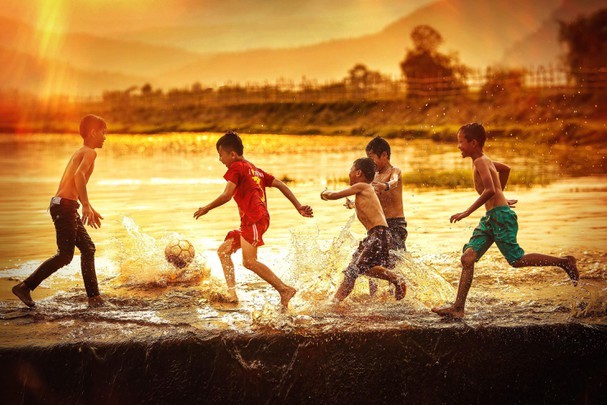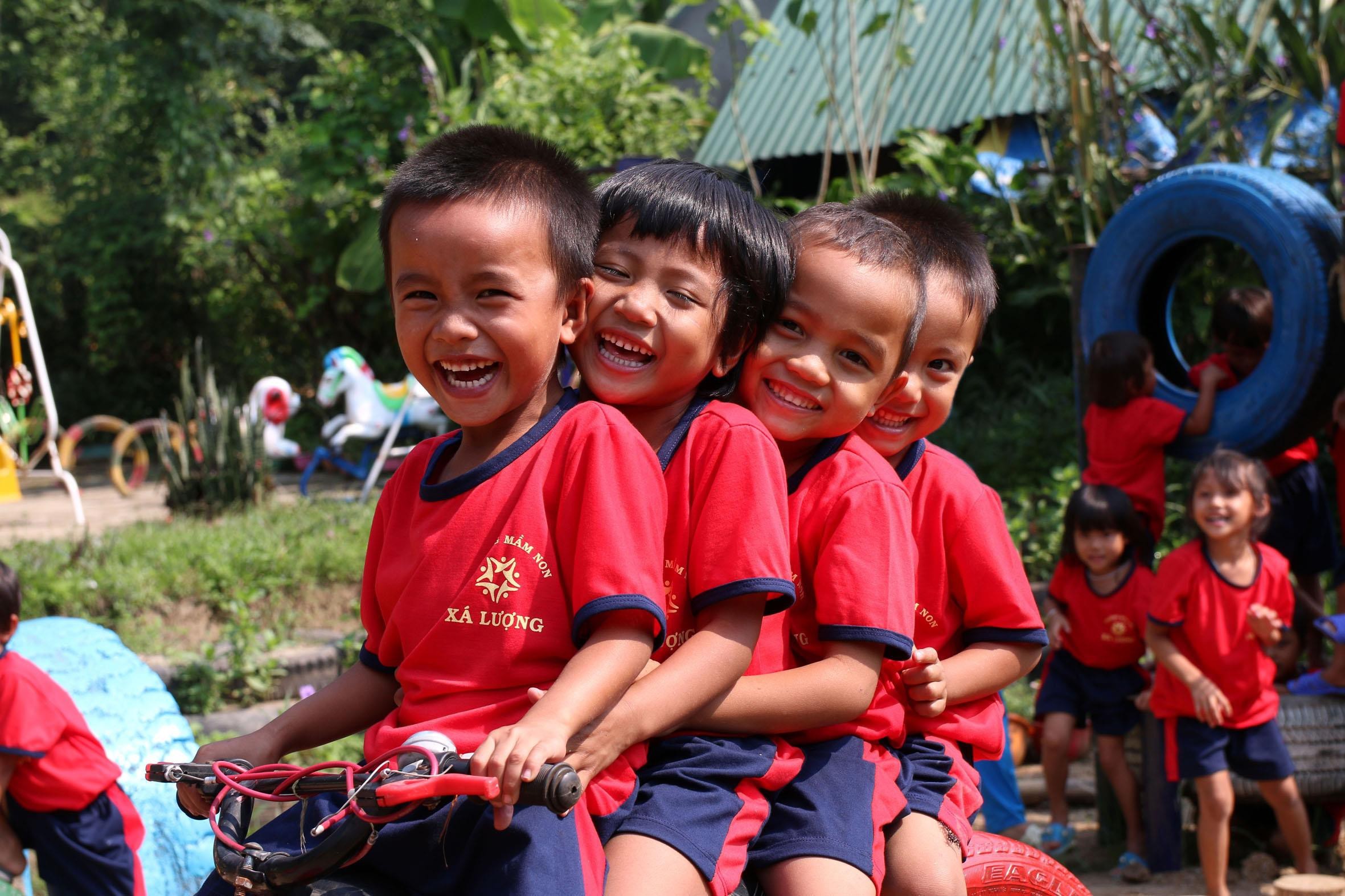More and more children are protected by the law, taken care, can go to school to learn knowledge and skills and are prioritized for welfare policies.
30 years after joining the United Nations Convention on the Rights of the Child (1989-2019), in Vietnam, the mortality rate among children under 5 years old decreased by 3/4, malnutrition and stunting rate reduced by half; high vaccination rates helped eradicate polio, neonatal tetanus and control measles; the rate of children going to school was highest in history...
These achievements were highlighted at the 30th Anniversary of the UN Convention on the Rights of the Child, held on the evening of November 16 in Hanoi.
Identifying threats that limit children's rights
 |
|
Illustrative image
|
However, global changes, such as the development of digital technologies, changes in living environments, and mass migration have posed new challenges in ensuring the full realization of children's rights.
Ms. Nguyen Thi Nga, Deputy Director of the Department of Children, Ministry of Labor, War Invalids and Social Affairs, discussed issues that will limit or deprive the rights of children, which are:
On one hand, the market economy and international economic integration promote common commitments and standards on human right and children's rights through free trade agreements (FTAs).
On the other hand, diversifying economic sectors, easing migration, immigration, civil status registration, citizenship, promoting tourism... increases the risks of child labor, child trafficking, child abuse and exploitation, especially children who are refugees, without the accompany of adults ... In particular, these factors make the increase of inequality in development opportunities for children in mountainous and ethnic minority areas as well as disadvantaged regions.
Children are the first and persistent target of climate change, natural disasters, harsh environment, and reduced natural resources; the guarantee of rights from many angles such as are, education and protection for children is also affected or limited.
Urbanization and migration lead to a situation in which rural children lack parental care and protection. Access to quality basic services for children and their parents in urban areas and industrial zones is difficult; education, especially preschool education is in shortage and beyond standards; birth registration is not guaranteed; inability to access health insurance; accidents and injuries due to lack of family supervision increases... Meanwhile, children in urban areas are also under pressure due to the lack of infrastructure for education, healthcare and entertainment services; unsafe living environment (traffic accidents, social evils, environmental pollution...).
 |
|
Illustrative image
|
The industrial revolution 4.0 and the development of the Internet, social networks on one hand create an environment for children to develop their intelligence and social communication but at the same time they increase the risks of being affected by bad, toxic information; subject to violence and abuse on and through the cyber space.
Protecting children with specific actions
Vietnam is proud to be the first country in Asia, the second in the world to ratify this Convention on February 20, 1990. With its best efforts, the policy of dedicating the best to children, the State of Vietnam has continuously harmonized national laws with the UN Convention on the Rights of the Child. The United Nations Convention on the Rights of the Child is, until today, considered the most progressive and has the largest number of member states (196 countries).
The 2013 Vietnamese Constitution is a progressive step towards ensuring children's rights with a chapter on human rights and specific provisions on children's rights. The Child Law 2016 provides a foundational legal framework to ensure the full realization of the rights of all children with provisions more consistent with the UN Convention on the Rights of the Child. Other laws in the process of amending and supplementing are also updated to more fully meet international practices and standards related to children's rights, such as: the Criminal Code, Law on Criminal Procedure, Law on Administrative Violation, Labor Code, Law on Marriage and Family, Law on People's Court Organization...
 |
|
"Listen to children with your heart; protect them with your action". Illustrative photo
|
The consistent policy of the Vietnamese State is to place children at the focus of investment in society, investment in children is investment in sustainable development and the best preparation for human resources.
Along with the legal system of children's rights that is constantly being built in an increasingly progressive direction, meeting Vietnam's international integration requirements, many policies, programs, plans and schemes have been approved by the Government, the Prime Minister to ensure that children's rights are fully met and newly-emerged issues that are related to children are solved.
In 2020, Vietnam is actively prepared for the 10-year Socio-Economic Development Strategy for the period 2021 - 2030 and the 5-year socio-economic development plan for the period 2021 - 2025. The Government of Vietnam also issued an action plan to realize the goals of the Sustainable Development Agenda to 2030 of the United Nations (Decision No. 622/QD-TTg dated May 10, 2017 on the promulgation of the National action plan to implement the Agenda 2030 for sustainable development; Decision No. 681/QD-TTg dated June 4 2019 on promulgating a roadmap for the implementation of the sustainable development goals of Vietnam to 2030), including 13 targets and 40 criteria on or related to children.
On May 26, 2020, Prime Minister Nguyen Xuan Phuc signed to issue Directive No. 23/CT-TTg on strengthening measures to ensure the realization of children's rights and protection of children. Specifically, in order to enhance the implementation of children's rights and interests and protect children, the Prime Minister instructed ministries, branches and People's Committees at all levels to strictly abide by the law on children, regularly reviewing, recommending and completing policies and laws on children; Heads of agencies, organizations and local governments are responsible for the death of children due to accidents, serious violations of children's rights, violence, sexual abuse against children, and children wandering to earn a living in the area or not giving support, intervening, and promptly handling cases of violating children's rights….
The fact shows that, for every child left behind, the risk for being lagging behind of a nation will be even greater. Therefore, the Vietnamese State has been trying to turn all commitments into urgent, strong and concrete action.
Ho Tu